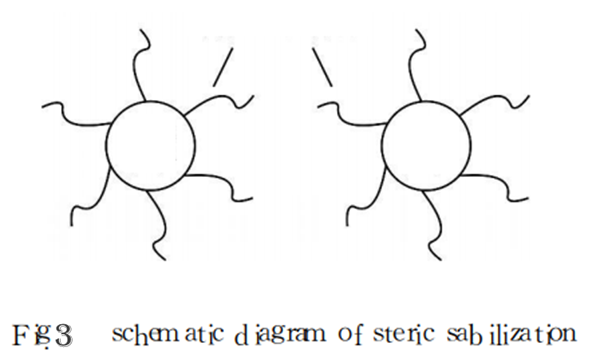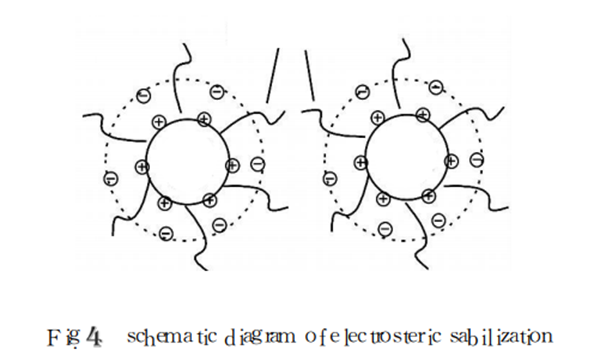- Home
- Products
- Elementary
- Boride Powder
- 3D Printing Powder
- Sulfide Powder
- Oxide Powder
- Carbide powder
- Nitride Powder
- Silicide Powder
- Hydride Powder
- Telluride Powder
- Selenide Powder
- Stearic Acid Series
- Phosphide Powder
- Nanoparticles
- Metal Alloy
- MAX Phase
- Lithium Battery Anode
- Surfactant
- Molecular sieves
- Concrete Admixtures
- News
- Answers
- Contact
- About
How to improve nanoparticles to make them more superior nanomaterials
Pile of nanoparticles
The agglomeration of nanoparticles can be divided into two types: soft agglomeration as well as tough jumble. Soft load is generally created by the electrostatic force in between fragments as well as van der Waals force. Because of the weak force, soft cluster can pass some chemical techniques.
The legislation or the application of mechanical power to remove; the development of difficult jumble along with electrostatic pressures and also van der Waals forces, there are chemical bonds, so hard agglomerates are difficult to damage, require to take some unique methods to manage.
 < img src="// ueeshop.ly200-cdn. com/u _ file/UPAI/UPAI779
/ 1907/photo/1661a376e4. png"/ > Schematic representation of pile of nanoparticles Diffusion of nanoparticles One of the methods to avoid the development of high-density, hard-block precipitates of nanoparticles is to minimize van der Waals tourist attraction or interaction in between groups, to make sure that the primary particles are not easily agglomerated to develop secondary bits, thus preventing further inter-atomic bonding. This results in the development of high-density, hard-blocked precipitates. The anti-agglomeration device of nanoparticles is divided right into: (1) electrostatic stabilization (DLVO theory); (2) steric stablizing; (3) electrostatic steric stablizing.
Nanoparticle diffusion concept Electrostatic stablizing system (DLVO concept)
The electrostatic stabilization mechanism, additionally understood as the electric dual layer stablizing mechanism, develops an electric double layer by readjusting the pH worth to produce a certain amount of surface area fee on the surface of the particle. The destination in between the particles is significantly reduced by the undesirable pressure in between the electric dual layers, thus understanding the dispersion of the nanoparticles. The system is revealed as revealed in Number 2.
< img src="// ueeshop.ly200-cdn. com/u _ file/UPAI/UPAI779
/ 1907/photo/1661a376e4. png"/ > Schematic representation of pile of nanoparticles Diffusion of nanoparticles One of the methods to avoid the development of high-density, hard-block precipitates of nanoparticles is to minimize van der Waals tourist attraction or interaction in between groups, to make sure that the primary particles are not easily agglomerated to develop secondary bits, thus preventing further inter-atomic bonding. This results in the development of high-density, hard-blocked precipitates. The anti-agglomeration device of nanoparticles is divided right into: (1) electrostatic stabilization (DLVO theory); (2) steric stablizing; (3) electrostatic steric stablizing.
Nanoparticle diffusion concept Electrostatic stablizing system (DLVO concept)
The electrostatic stabilization mechanism, additionally understood as the electric dual layer stablizing mechanism, develops an electric double layer by readjusting the pH worth to produce a certain amount of surface area fee on the surface of the particle. The destination in between the particles is significantly reduced by the undesirable pressure in between the electric dual layers, thus understanding the dispersion of the nanoparticles. The system is revealed as revealed in Number 2.

- < img src="// ueeshop.ly200-cdn. com/u _ file/UPAI/UPAI779/ 1907/photo/38c1a5ba33. png"/ > Stochastic stabilization system The steric stablizing mechanism is to include a particular amount of uncharged polymer substance to the suspension to adsorb it around the nanoparticles to form a microcell state, which creates repulsion between the bits, therefore achieving the purpose of dispersion. The device representation is shown in Number 4.
- Electrostatic steric stablizing device
The pH worth of the polyelectrolyte optimizes the dissociation degree of the polyelectrolyte, to ensure that the polyelectrolyte externally of the fragment gets to the saturated adsorption, and also both together work to evenly spread the nanoparticles. The mechanism layout is received Number 3.
 < img src="// ueeshop.ly200-cdn.
com/u _ file/UPAI/UPAI779/ 1907/photo/ed7d9c96f4. png"/ > Nanoparticle dispersion method The dispersion of nanoparticles in the medium is typically separated right into three phases: 1 liquid moistening the solid particles; 2 spreading the larger accumulations right into smaller sized particles by exterior force; 3 stabilizing the spread particles, making sure that the powder bits remain in the fluid The stage stays uniformly distributed for a lengthy duration of time to stop the spread particles from re-aggregating. According to different diffusion systems, it can be split into mechanical activity method as well as surface area modification method.
< img src="// ueeshop.ly200-cdn.
com/u _ file/UPAI/UPAI779/ 1907/photo/ed7d9c96f4. png"/ > Nanoparticle dispersion method The dispersion of nanoparticles in the medium is typically separated right into three phases: 1 liquid moistening the solid particles; 2 spreading the larger accumulations right into smaller sized particles by exterior force; 3 stabilizing the spread particles, making sure that the powder bits remain in the fluid The stage stays uniformly distributed for a lengthy duration of time to stop the spread particles from re-aggregating. According to different diffusion systems, it can be split into mechanical activity method as well as surface area modification method.
- Mechanical action
- Surface alteration
- Surface area modification of nanoparticles by inorganic substances
- Surface adjustment of nanoparticles by organic issue
 < img src ="// ueeshop.ly200-cdn.
com/u _ file/UPAI/UPAI779/ 1907/photo/c845513ec8. png"/ > verdict The surface modification innovation of nanoparticles is a side discipline closely pertaining to several other techniques, consisting of colloidal chemistry, organic chemistry, crystallography, nanomaterials, contemporary instrument analysis and also testing. The surface area coating modification innovation has been extensively used in the surface area modification of nanometers, as well as the research results in this area likewise reveal that the surface finish innovation has a good development possibility. Nonetheless, the adjustment system, alteration method and devices, and the adjustment effect characterization are still not excellent. Often times, the issue can not be solved essentially, as well as additional research is urgently required. Because of the significant changes in the physical and chemical residential or commercial properties of the surface-treated bits, the advancement of nano surface area modification modern technology is thought about an essential ways of producing brand-new products in the future. With the continual research and also understanding of nano-particles, and also better expedition of the surface area adjustment of nano-powders, nano-technology will definitely put in potential power in different areas and will generate a good society. Advantages as well as economic advantages.
< img src ="// ueeshop.ly200-cdn.
com/u _ file/UPAI/UPAI779/ 1907/photo/c845513ec8. png"/ > verdict The surface modification innovation of nanoparticles is a side discipline closely pertaining to several other techniques, consisting of colloidal chemistry, organic chemistry, crystallography, nanomaterials, contemporary instrument analysis and also testing. The surface area coating modification innovation has been extensively used in the surface area modification of nanometers, as well as the research results in this area likewise reveal that the surface finish innovation has a good development possibility. Nonetheless, the adjustment system, alteration method and devices, and the adjustment effect characterization are still not excellent. Often times, the issue can not be solved essentially, as well as additional research is urgently required. Because of the significant changes in the physical and chemical residential or commercial properties of the surface-treated bits, the advancement of nano surface area modification modern technology is thought about an essential ways of producing brand-new products in the future. With the continual research and also understanding of nano-particles, and also better expedition of the surface area adjustment of nano-powders, nano-technology will definitely put in potential power in different areas and will generate a good society. Advantages as well as economic advantages.
Luoyang Tech Co., Ltd is an expert Zinc Nanoparticles producer with over 12 years experience in chemical products study as well as development. If you are looking for top quality Zinc Nanoparticles, please really feel totally free to contact us as well as send a query.
Inquiry us
PREVIOUS NEWS
The role of redispersible latex powder in mortar
NEXT NEWS
 < img src="// ueeshop.ly200-cdn.
com/u _ file/UPAI/UPAI779/ 1907/photo/ed7d9c96f4. png"/ > Nanoparticle dispersion method The dispersion of nanoparticles in the medium is typically separated right into three phases: 1 liquid moistening the solid particles; 2 spreading the larger accumulations right into smaller sized particles by exterior force; 3 stabilizing the spread particles, making sure that the powder bits remain in the fluid The stage stays uniformly distributed for a lengthy duration of time to stop the spread particles from re-aggregating. According to different diffusion systems, it can be split into mechanical activity method as well as surface area modification method.
< img src="// ueeshop.ly200-cdn.
com/u _ file/UPAI/UPAI779/ 1907/photo/ed7d9c96f4. png"/ > Nanoparticle dispersion method The dispersion of nanoparticles in the medium is typically separated right into three phases: 1 liquid moistening the solid particles; 2 spreading the larger accumulations right into smaller sized particles by exterior force; 3 stabilizing the spread particles, making sure that the powder bits remain in the fluid The stage stays uniformly distributed for a lengthy duration of time to stop the spread particles from re-aggregating. According to different diffusion systems, it can be split into mechanical activity method as well as surface area modification method.
 < img src ="// ueeshop.ly200-cdn.
com/u _ file/UPAI/UPAI779/ 1907/photo/c845513ec8. png"/ > verdict The surface modification innovation of nanoparticles is a side discipline closely pertaining to several other techniques, consisting of colloidal chemistry, organic chemistry, crystallography, nanomaterials, contemporary instrument analysis and also testing. The surface area coating modification innovation has been extensively used in the surface area modification of nanometers, as well as the research results in this area likewise reveal that the surface finish innovation has a good development possibility. Nonetheless, the adjustment system, alteration method and devices, and the adjustment effect characterization are still not excellent. Often times, the issue can not be solved essentially, as well as additional research is urgently required. Because of the significant changes in the physical and chemical residential or commercial properties of the surface-treated bits, the advancement of nano surface area modification modern technology is thought about an essential ways of producing brand-new products in the future. With the continual research and also understanding of nano-particles, and also better expedition of the surface area adjustment of nano-powders, nano-technology will definitely put in potential power in different areas and will generate a good society. Advantages as well as economic advantages.
< img src ="// ueeshop.ly200-cdn.
com/u _ file/UPAI/UPAI779/ 1907/photo/c845513ec8. png"/ > verdict The surface modification innovation of nanoparticles is a side discipline closely pertaining to several other techniques, consisting of colloidal chemistry, organic chemistry, crystallography, nanomaterials, contemporary instrument analysis and also testing. The surface area coating modification innovation has been extensively used in the surface area modification of nanometers, as well as the research results in this area likewise reveal that the surface finish innovation has a good development possibility. Nonetheless, the adjustment system, alteration method and devices, and the adjustment effect characterization are still not excellent. Often times, the issue can not be solved essentially, as well as additional research is urgently required. Because of the significant changes in the physical and chemical residential or commercial properties of the surface-treated bits, the advancement of nano surface area modification modern technology is thought about an essential ways of producing brand-new products in the future. With the continual research and also understanding of nano-particles, and also better expedition of the surface area adjustment of nano-powders, nano-technology will definitely put in potential power in different areas and will generate a good society. Advantages as well as economic advantages.